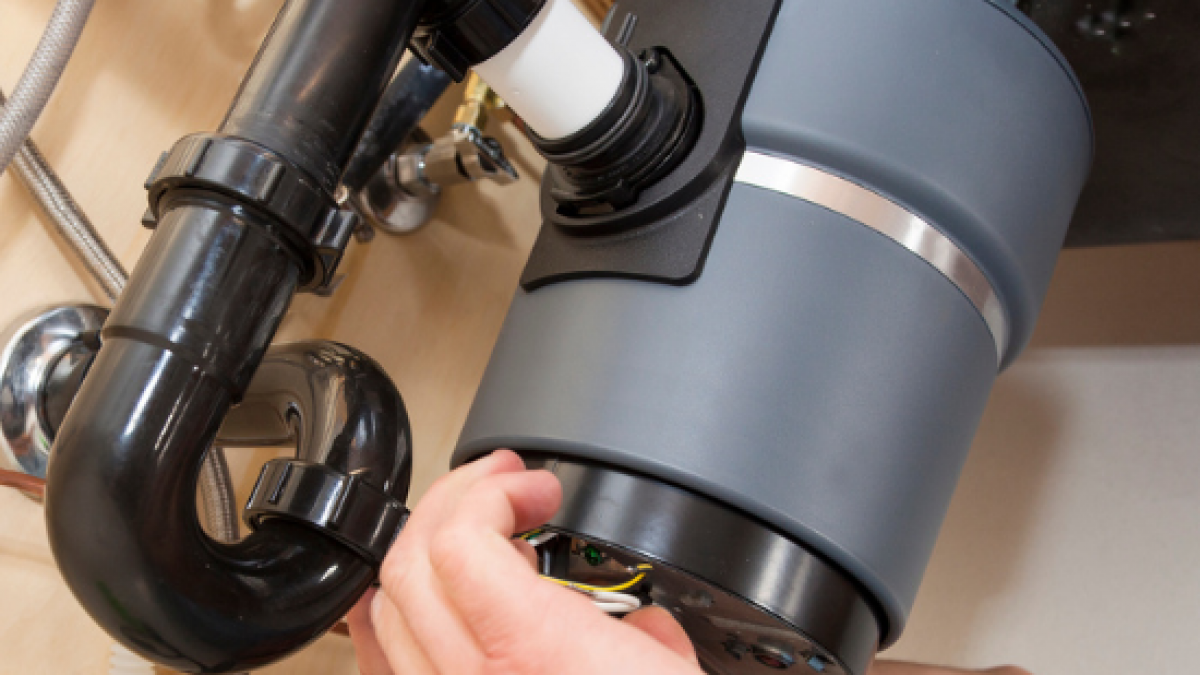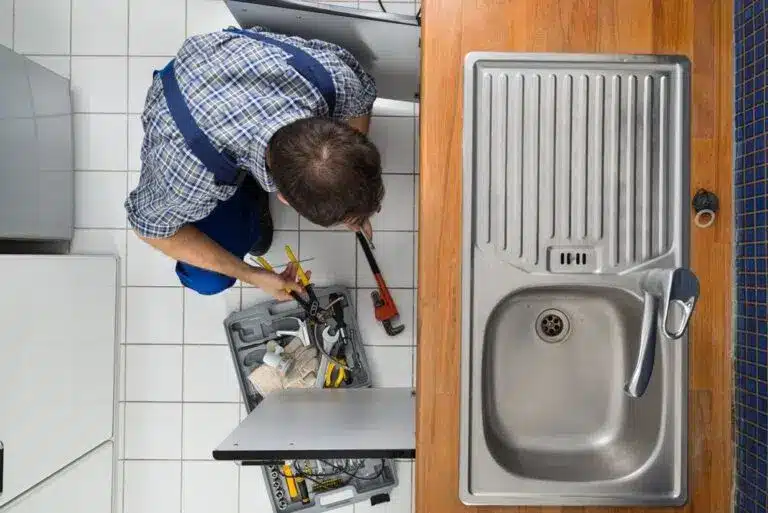Are you hunting for facts on Why Is My Garbage Disposal Leaking From the Bottom??

Garbage disposals are essential cooking area devices that assist in throwing away food waste effectively. However, a dripping garbage disposal can be an aggravating and unpleasant issue to deal with. The good news is, lots of leaks can be taken care of easily with a couple of simple actions. In this article, we will review exactly how to deal with a leaking waste disposal unit properly.
Introduction
Waste disposal unit are mounted under kitchen sinks and are developed to shred food waste right into smaller sized pieces, allowing it to go through the pipes system conveniently. While these tools are generally reputable, leaks can happen gradually as a result of damage, loosened links, or damages to the device.
Step-by-Step Guide to Repairing a Dripping Waste Disposal Unit
Switch off the Power
Before attempting any kind of repair work, make sure that the power to the garbage disposal device is turned off to avoid the danger of electric shock.
Locate the Leakage
Determine the exact area of the leakage and establish the reason
Tighten Links
Make use of a wrench to tighten any kind of loose links between the disposal unit and the pipes system.
Replace Seals or Gaskets
If the leakage is due to used seals or gaskets, remove the old elements and change them with new ones.
Patching Splits or Holes
For fractures or openings in the disposal unit, usage epoxy or an ideal patching material to secure the broken area.
Determining the Resource of the Leakage
Before attempting to take care of a dripping garbage disposal, it is vital to identify the source of the leak. This can normally be done via aesthetic inspection or by conducting easy tests.
Visual Assessment
Check the waste disposal unit system very carefully for any type of indications of water leakage. Pay very close attention to areas around seals, gaskets, and connection factors.
Checking for Leakages
One method to evaluate for leaks is by running water with the disposal system and checking for any type of noticeable signs of leakage.
Typical Reasons For Leakages in Waste Disposals
Worn Seals and Gaskets
Seals and gaskets play a crucial duty in preventing water from dripping out of the garbage disposal. In time, these elements can deteriorate, bring about leaks around the disposal unit.
Loose Connections
The links between the garbage disposal and the pipes system can become loose in time, causing water to leakage out during procedure.
Fractures or Holes in the Disposal Device
Physical damage to the waste disposal unit, such as fractures or openings in the housing, can additionally result in leakages.
Tools and Materials Needed for Fixing a Leaking Waste Disposal Unit
Before beginning the fixing process, gather the essential tools and materials, consisting of a screwdriver, flexible wrench, plumbing's putty, substitute seals or gaskets, and epoxy or patching product for repairing splits or openings.
Checking the Waste Disposal Unit After Repair Service
When the repair is full, examine the garbage disposal by running water through it to make certain that the leakage has been resolved.
Preventive Upkeep Tips to Avoid Future Leakages
To avoid future leakages, it is important to perform normal maintenance on your waste disposal unit. This includes maintaining it clean, avoiding putting non-food items or tough things down the disposal, and periodically checking for leakages or other issues.
Final thought
Finally, dealing with a leaking garbage disposal is a fairly straightforward procedure that can be completed with fundamental devices and materials. By complying with the steps detailed in this short article and exercising preventative upkeep, you can maintain your garbage disposal in good working problem and prevent costly repair work in the future.
What to Do About a Leaking Garbage Disposal
A leaking garbage disposal often goes unnoticed until you confront a sopping cabinet, a foul-smelling puddle, or an audible drip-drip-drip from the unit. The fix can be frustrating, too, because the leak can stem from a number of components in the system. Fortunately, with a little sleuthing, you can zero in on the leak and—depending on the exact location—stop the icky oozing and repair the component that caused it. Worst case scenario, if it turns out that the garbage disposal must be replaced, installing a new one is a reasonable do-it-yourself task for those with basic plumbing skills. Read on to keep the cash you’d otherwise hand over to a pro.
Prepare to find the leak
Prior to testing the garbage disposal for leaks, unplug it at the wall outlet and turn off the power from the breaker box to prevent electrical shock. Then insert a watertight sink stopper into your sink drain and wipe the unit dry with a clean cloth. In any handy container, mix a few drops of food coloring into a few cups of water, and pour the dyed water onto the sink stopper to help you locate the leak.
Investigate the source
the top, where the disposal meets the sink drain the side, where the dishwasher hose or main drain pipe connects to the disposal or the bottom of the unit Inspect each of these locations while gliding a light-colored rag over the unit; the dyed water will readily show on the rag and reveal the location of the leak. If a leak isn’t immediately apparent, remove the sink stopper and pour a few more cups of dyed water down the sink drain, then check for leaks again. Leaks near the top of the unit are more likely to show themselves while the sink is plugged, while side and bottom leaks are more noticeable while the sink is unplugged.
The metal sink flange that sits directly inside the sink drain is typically sealed around the top with plumber’s putty (a clay-like sealant) and then secured from under the sink with bolts. If the plumber’s putty deteriorates, or the bolts loosen, the flange can no longer form a watertight seal between the sink drain and the disposal—which could cause a leak at the top of the unit.
To reseal the leaky flange, you must first detach the garbage disposal. Start by loosening the screws securing the main drain pipe to the disposal, then loosen the screws in the metal clamp securing the dishwasher hose to the disposal and detach the drain pipe and dishwasher hose from the disposal. Loosen the screws in the mounting ring that connects the disposal to the metal mounting assembly beneath the sink, then pull down the disposal and carefully set it on a clean, dry surface. Loosen the bolts in the mounting assembly with a wrench, then pull down the mounting assembly and set it near the disposal.

I hope you enjoyed our post on Tips on Fixing a Leaking Garbage Disposal. Thanks for finding the time to browse our posting. Enjoyed reading our article? Please share it. Help somebody else find it. Kudos for your time. Visit us again soon.
Call Today